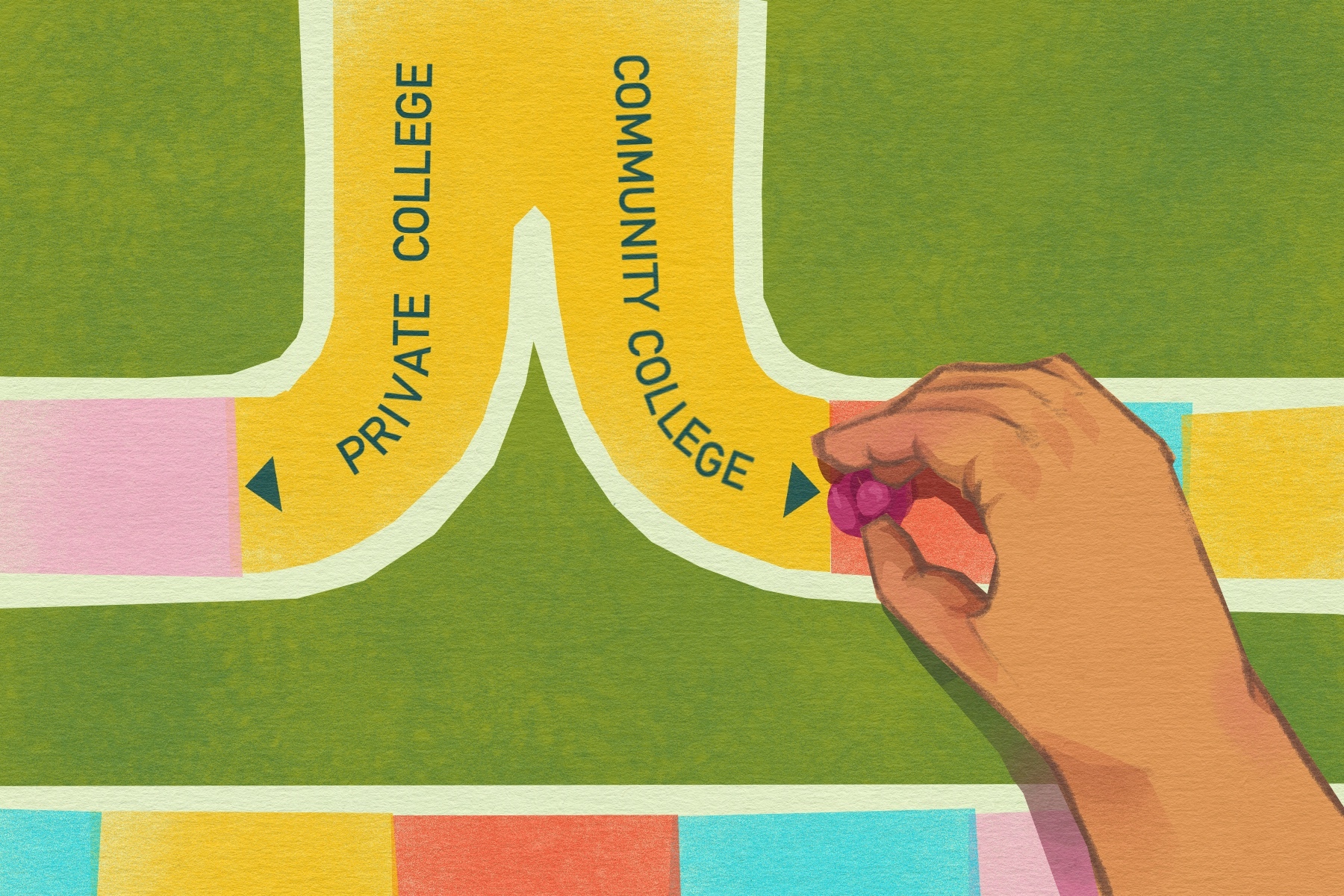After almost four years in high school, it’s time for students to apply for colleges. For students, the most stressful part of the college application process is waiting for an acceptance letter from their dream school. The University of California, Los Angeles, New York University, Stanford University and Princeton University are among the dream schools most commonly listed by students. High schoolers take multiple Advancement Place courses, study tirelessly for the SAT or ACT and participate in extracurricular activities in the hopes of getting accepted into these schools. After submitting their applications in November, they must anxiously wait until March to receive an email with their admissions decisions. Some schools, like UCLA and Stanford, make students log into an online portal to check their admission status instead. All students hope for digital confetti to appear on their screens, congratulating them on their hard work paying off. However, if applications don’t turn out as expected, never doubt community college as an option. Community college shouldn’t be viewed as a disappointing option, but rather a second chance with its own set of unique benefits.
Changing Majors
According to the U.S. Department of Education, one-third of undergraduate students change their major at least once. Community colleges allow students to explore their interests and experience potential majors. In the first two years of community college, students take general education courses. If a student received passing scores on Advanced Placement exams, those grades count as college credits. As a result, these students may bypass general education requirements and take courses related to their interests. Students are also able to freely change their major until sophomore year. The flexibility of community college allows students to explore potential majors before settling into one and transferring the following year.
The Professors
Students at community colleges often establish greater bonds with their professors due to their smaller class sizes. Community colleges offer classes of arount 25 to 30 people, which help professors better meet each student’s needs and provide personalized resources for internships and jobs. This contrasts with class sizes of over 300 at large four-year universities. Students in large classes may feel unable to approach their professors, as they are only a small percentage of their roster. Some may feel that it is a burden to approach their professors, especially on their first day of class. Besides that, there isn’t much of a difference between professors at community colleges and universities. All professors have advanced degrees in their fields and relevant work experience. Professors from community colleges will also help students apply and transfer to four-year universities to continue their education. These professors can provide in-depth advice based on their former students who transferred to these colleges and successfully advanced their educations and careers.
Affordability
Community college is arguably more affordable than a four-year university. For example, the first two years at community colleges in California are free for full-time students. After that, these colleges usually charge students $552 for 12 credit hours. In contrast, four-year colleges are infamously expensive. To begin with, students who attend public in-state universities are hit with tuition bills of around $25,707 per year, or $102,828 over the course of four years. Out-of-state students must pay $44,014 per year, or $176,056 for four years. Private, nonprofit universities charge $54,501 each year, or $218,004 for four years. Even though some students are eligible for financial aid and scholarships, most suffer from debt in the long run. According to the Association of Public and Land-Grant Universities, students owe an average of $25,921 for a four-year degree, which is $6,480 a year. Most students who start in community college have lower costs to worry about. Students who transfer to a public four-year university after two years of community college only have to pay around $12,960 for their last two years at a public university.
A Second Chance
Attending community college also gives students a second chance to get into their dream school. Students can increase their grade point average and participate in extracurricular activities. Although community colleges don’t offer many extracurricular programs, it does help students create their own clubs or run for student government positions. Additionally, community colleges provide students with resources to help them transfer to a four-year university or gain employment. Students can use these extracurricular activities and resources to help them with their educational and professional applications. The universities or jobs they apply to will consider students’ recent academic achievements rather than their four years in high school.
Is It Worth It?
According to University of California statistics, 29,000 transfer students were admitted to their schools in 2019. Nonetheless, that is only half of the number of transfer students who applied that year. The number of California resident transfer students has more than doubled since 1994. These statistics show that students are finding success in transferring from community colleges to four-year universities. Community college offers students time to explore majors and develop relationships with their professors in an affordable manner. They also act as a second chance for students to get into their dream schools. All these factors make community college an appealing and accessible option for higher education.

















